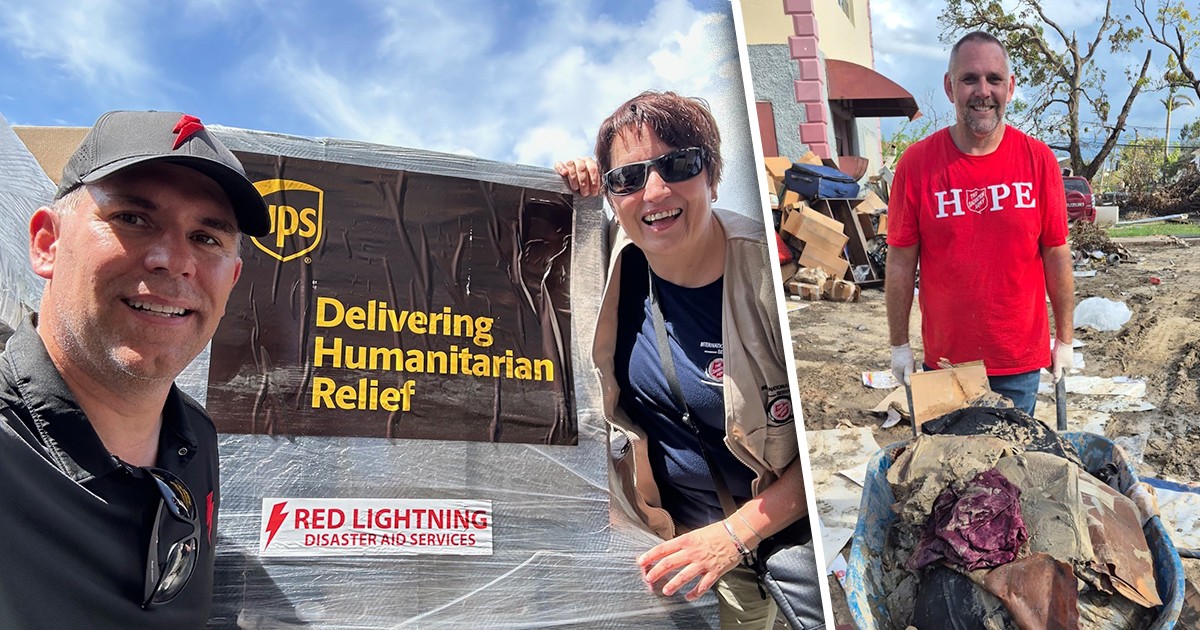But with that phone call, everything changed. “There was a distressed voice on the other end of the line,” says Nancy, “and when Cam hung up, he said, ‘We’ve got to go.’ ”
The call came from a couple at their church who were close friends. When the Hickses arrived at their friends’ house a few minutes later, the mother’s face was streaked with tears. “She looked at us and said, ‘The truth will set us free,’ ” Nancy recalls. “And I remember thinking, What truth are we talking about here?”
Devastated and Shocked
Until recently, speaking out about sexual abuse—especially in the church—was rare. Even today, only about five percent of sexual assaults are reported to police. But thanks to movements such as #MeToo and #ChurchToo, more survivors are finding it possible to share their stories.
Tragically, there are many survivors—about one in three women and one in six men will experience some form of sexual violence in their lifetime. As the Hicks family learned in 2013, no one is immune from sexual abuse—not even a tight-knit Christian family like their own.
Nancy and Cam are lifelong Christians—Nancy grew up at Toronto’s Yorkminster Citadel, while Cam is from London Citadel, Ont.—and they’ve been leaders in the church since they were teenagers. They now live in Philadelphia and attend a non-denominational church where Nancy is head of outreach and evangelism and Cam serves as a senior elder.
 Cam and Nancy Hicks grew up in Ontario
Cam and Nancy Hicks grew up in Ontario
After the couple shared the horrifying truth, the four parents took time to pray. “I knelt on the floor and for some time, I just listened. Listened to the cries for help. Listened to the anguish. Listened to the Holy Spirit in my soul,” Nancy recalls. “Then, as if a dam burst, I wailed, ‘I trusted you!’ I kept repeating that. And then I sobbed and said, ‘I trust you still.’ It was a declaration.”
The Hicks family talked late into the night, as Aaron shared the whole story of what had happened. As they wept together and held each other in the kitchen back at their home, the older son, David, who was the first to discover that the abuse had been happening, tried to offer his parents some consolation: “Mom and Dad,” he told them, “this is not your fault.”
In response, Cam turned to Aaron and said, “I am so sorry I didn’t protect you. But I’m going to protect you now.”
Seeking Justice
The next morning, the Hickses called a close friend, a lawyer-turned-counsellor who leads a ministry to pastors and leaders. With his guidance, they phoned the police and started the process of bringing the youth worker to justice. “We spent the entire summer and the fall working with the police to get all the evidence that we needed so that he could be arrested,” Nancy says.
For David and Aaron, this process included gathering all written communication with him, such as emails and text messages, from the past five years, and meeting him in person while wearing a wire in order to get information on record—all without letting on that any investigation was happening. “These kids were unbelievably brave,” Nancy reflects.
In the end, the youth worker was convicted of his crimes and sentenced to a minimum of 12 years in prison.
While the Hickses’ experience with the legal system resulted in justice, their experience with the church was mixed.
When the abuse allegations were first brought to their church’s leaders, the Hickses were disappointed by what they learned. “We were pretty angry because as we told different leaders, people would say things like, ‘I’m not surprised,’ ” Nancy shares. “We found out that people had suspicions about these things happening, but they didn’t do anything, they didn’t say anything.”
As the investigation proceeded, further stories of the youth worker’s abusive behaviour came out, and a third survivor was added to the criminal case. However, no red flags had ever been logged. For Nancy, this was an area where the church let their family and the other survivors down.
“We don’t want to villainize people—we have to be careful—but at the same time, instances of inappropriate behaviour should be logged. Because they may seem like isolated incidents, but when you put them all together, it’s like, ‘Wait a minute.’ ”
The social worker who was assigned their case told the Hicks family that the church is one of the worst places for predatory behaviour. “She said, ‘It’s because you Christians are so naïve. You want to believe the best about people.’ And we do, right?” Nancy says.
Her son’s experience underscores the need for churches to have robust policies and procedures in place, to prevent abuse from happening and to properly address abuse if it does occur (see "How Do We Create Safer Congregations?" below).
The Hickses’ church apologized to the survivors for the abuse, but it wasn’t until a new senior pastor came to the church two years later that the congregation truly began to reckon with what had happened. Under the new pastor’s leadership, the church launched a full investigation and brought in Dan Allender, a well-known Christian therapist who focuses on sexual abuse and trauma recovery, to lead a conference and educate the congregation.
“Our pastor really wanted to face it head on and that was, for us, one of the most healing things that was done in the church,” says Nancy.
Not Going Under
From that moment of desperate prayer when she declared her trust in God, Nancy says she felt his presence with her through the whole ordeal.
“God was kind in giving us another couple to walk the journey with and to fight with,” she says. “There were few people we could tell while we were working with the police, but there was a handful of people that we walked with, people who were wise and held us in prayer.”
 A happy day for Cam, Aaron, daughter-in-law, Rachel, Nancy and David
A happy day for Cam, Aaron, daughter-in-law, Rachel, Nancy and David
“I remember at one point lying on the couch, feeling like I’d been shot in the head, but thinking, I know this is the evil one and I’m getting up,” Nancy shares.
“Catherine Booth once said, ‘The waters are rising, but so am I. I’m not going under, but over.’ And that’s how I feel,” she continues. “As the kingdom of the evil one rises, so does the kingdom of God—we can’t ignore that there’s a war going on. This whole situation has caused our family to get stronger and more focused, to roll up our sleeves and say, ‘God, I’m all in. Use me to bring about the kingdom in our time.’ ”
Still, as Nancy admits, an experience such as theirs could easily cause someone to walk away from the church. “Our children have not walked away, but they have rejected a brand of Christianity that was popular for a long time—inauthentic, glossy,” she says. “We don’t buy into the ‘put a smile on your face, claim a verse, you’re good’ kind of Christianity. We are very real about walking with God and what that looks like. This experience has strengthened us.”
Some of those experiences and lessons are captured in Nancy’s new book, Meant to Live: Living in Light of the Good News, which encourages Christians to live in the power of the gospel (see below). “If the message in this book is not true in the hard times, the times of suffering, then it’s not true at all,” she says.
Run to God
In the years since the abuse occurred, Nancy, who regularly speaks at conferences, retreats and churches around the world, has had various opportunities to share this part of her family’s story, knowing that a significant number of people in her audience may have experienced abuse themselves.
To the survivors, she offers this advice: “The first thing to do is to run to God, pour your heart out to him about what has gone on and ask him for wisdom and strength,” Nancy says. “The next is to run to the people who are closest to you—godly, wise people—because you cannot do this alone.”
And to parents who are coming to grips with the knowledge that their child has been abused: “It takes a lot of fortitude not to blame yourself,” Nancy says. “You have to nip that in the bud and say, ‘God, we failed and I confess that.’ But then you have to recognize, as the parent, that it is not about me; it’s about my child and bringing justice for the sake of the kingdom and for the sake of my child’s health. That’s the goal now.”
Recognizing the Grooming Process
Grooming is a process that seeks to gain the trust of a child and their family or caregivers in order to facilitate abuse. Grooming typically consists of the following steps:
Build Trust and Break Down a Child’s Defences
- Pretend to share common interests, backgrounds and experiences
- Give gifts as tokens of friendship
- Provide access to valuable items, privileges or activities that are typically unavailable or off limits to the child
- Flatter and make the child feel special and somehow indebted
- Offer a sympathetic and understanding ear (e.g., “No one understands you like I do”)
Reassure the Family
- Build a relationship with the child’s parents or caregivers to gain trust
- Behave in exemplary ways to alleviate concerns or possible suspicions
Gradually Erode Boundaries
Escalate inappropriate physical contact, such as:
- Hugging or touching nonthreatening areas of body
- Pretending to accidentally touch or brush up against the child
- Positioning self in close proximity to the child (e.g., sleep in the same bed)
- Engaging the child in nonsexual inappropriate behaviours (e.g., drinking alcohol)
- Touching inappropriate areas of the child’s body
Create Secrecy with the Child
- Make the child fearful that he or she will be in trouble if their activities together are discovered
- Tell the child that touching between them is good because their relationship is special
- Tell the child there will be consequences if he or she reports the sexual behaviour
Insist on Compliance
- Escalate intrusiveness of sexual behaviours over time
- Manipulate the child into performing or permitting sex acts
- Threaten to harm the child or a person who is important to them if he or she does not comply
Source: Office of the Territorial Abuse Advisor
How Do We Create Safer Congregations?
- Churches must develop and implement a policy related to abuse prevention and response.
- Clear definitions of various types of abuse and related issues must be taught to all staff and volunteers.
- All volunteers and paid employees—including clergy—who work with children, youth and/or vulnerable adults must be screened, including a police check.
- All premises and buildings must be modified in order to assist in the prevention of abuse (e.g., windows in classrooms, adequate lighting, monitored ministry areas).
- All staff and volunteers must receive ongoing training to prevent abuse, including guidelines for physical contact with children, the use of social media and how to interrupt concerning behaviour.
If you suspect a child is being harmed, or has been harmed, you must report your concerns to the appropriate authorities, such as child protective services or the police. “Some think they need to determine if the alleged abuse is true before they call the authorities,” notes Nancy Turley, territorial abuse advisor. “However, that is not your responsibility. We are only asked to report our suspicions of abuse. Speak to a trusted leader for support as you make contact with the local authorities.”
For more information about The Salvation Army’s policies and procedures concerning abuse, contact Nancy_Turley@can.salvationarmy.org.
Meant to Live: Living in Light of the Good News
If the message of Christ is good news, why is the church in North America floundering in complacency, while facing accelerating decline? As Nancy Hicks, former QVC host and international speaker, writes, “It’s as though the gospel hasn’t quite gotten through.” In Meant to Live, Hicks encourages Christians to “snap out of it” and remember that they are called by God to live a glorious life. She unpacks four “camps” she sees many Christians fall into, evaluating each camp’s strengths and weaknesses and correcting their false beliefs with biblical teaching. Filled with personal stories from Hicks’ life and ministry, Meant to Live is an invitation to become fully alive again in Jesus Christ.
Learn more about Meant to Live at nancyhickslive.com.










Leave a Comment